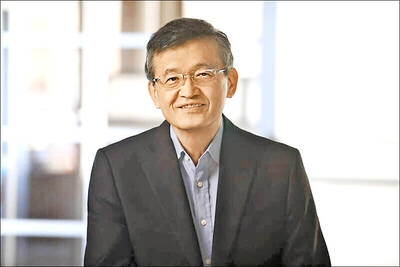Oil prices yesterday collapsed to more than two-decade lows, with traders concerned that storage facilities are filling up as the COVID-19 pandemic strangles demand.
US crude benchmark West Texas Intermediate (WTI) briefly plunged almost 20 percent to below US$14.50 — its lowest since 1999 — as stockpiles continue to build.
Oil markets have plunged in recent weeks as lockdowns and travel restrictions to fight the coronavirus around the world batter demand.

Photo:EPA-EFE
The crisis was compounded after Saudi Arabia, kingpin of exporting group OPEC, launched a price war with non-OPEC member Russia.
Riyadh and Moscow drew a line under their dispute earlier this month, when they and other countries agreed to cut output by almost 10 million barrels a day to boost virus-hit markets.
However, prices have continued to fall as analysts say the cuts are not enough — and US crude’s collapse yesterday was triggered by worries that key storage facilities in Cushing, Oklahoma, are under pressure.
In a sign of the level of oversupply, the US Energy Information Administration said crude inventories in the world’s biggest economy rose by 19.25 million barrels last week.
Trifecta Consultants analyst Sukrit Vijayakar said US refineries were not processing the crude supplies fast enough, resulting in fewer buyers and storage facilities filling up.
There are also plenty of supplies from the Middle East with no buyers as “freight costs are high,” he said.
“I think we will see a test of the 1998 lows at US$11 sooner rather than later,” Oanda Corp senior market analyst Jeffrey Halley said.
Australia and New Zealand Banking Group (ANZ) said in a note that “crude oil prices remained under pressure, as projections of weaker demand weigh on sentiment.”
“Despite the OPEC+ alliance agreeing to an unprecedented cut in output, the physical market is awash with oil,” it said, referring to the OPEC and non-OPEC partners.
“Concern continues to mount that storage facilities in the US will run out of capacity,” ANZ said.
“It’s a dump at all cost as no one ... wants delivery of oil, with Cushing storage facilities filling by the minute,” AxiCorp’s Stephen Innes added.

Intel Corp chief executive officer Lip-Bu Tan (陳立武) is expected to meet with Taiwanese suppliers next month in conjunction with the opening of the Computex Taipei trade show, supply chain sources said on Monday. The visit, the first for Tan to Taiwan since assuming his new post last month, would be aimed at enhancing Intel’s ties with suppliers in Taiwan as he attempts to help turn around the struggling US chipmaker, the sources said. Tan is to hold a banquet to celebrate Intel’s 40-year presence in Taiwan before Computex opens on May 20 and invite dozens of Taiwanese suppliers to exchange views

Application-specific integrated circuit designer Faraday Technology Corp (智原) yesterday said that although revenue this quarter would decline 30 percent from last quarter, it retained its full-year forecast of revenue growth of 100 percent. The company attributed the quarterly drop to a slowdown in customers’ production of chips using Faraday’s advanced packaging technology. The company is still confident about its revenue growth this year, given its strong “design-win” — or the projects it won to help customers design their chips, Faraday president Steve Wang (王國雍) told an online earnings conference. “The design-win this year is better than we expected. We believe we will win

Chizuko Kimura has become the first female sushi chef in the world to win a Michelin star, fulfilling a promise she made to her dying husband to continue his legacy. The 54-year-old Japanese chef regained the Michelin star her late husband, Shunei Kimura, won three years ago for their Sushi Shunei restaurant in Paris. For Shunei Kimura, the star was a dream come true. However, the joy was short-lived. He died from cancer just three months later in June 2022. He was 65. The following year, the restaurant in the heart of Montmartre lost its star rating. Chizuko Kimura insisted that the new star is still down

While China’s leaders use their economic and political might to fight US President Donald Trump’s trade war “to the end,” its army of social media soldiers are embarking on a more humorous campaign online. Trump’s tariff blitz has seen Washington and Beijing impose eye-watering duties on imports from the other, fanning a standoff between the economic superpowers that has sparked global recession fears and sent markets into a tailspin. Trump says his policy is a response to years of being “ripped off” by other countries and aims to bring manufacturing to the US, forcing companies to employ US workers. However, China’s online warriors